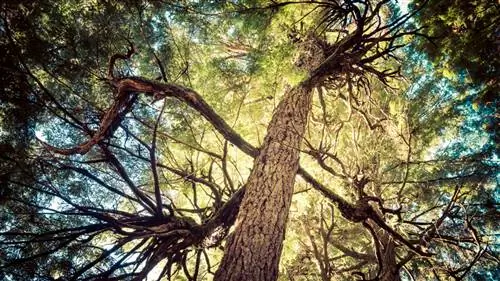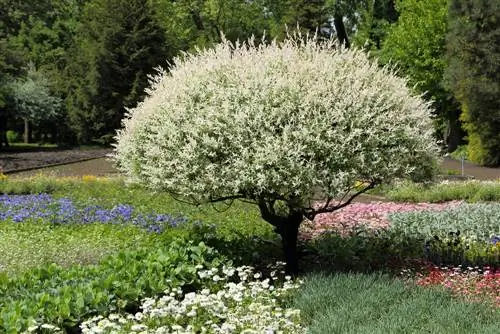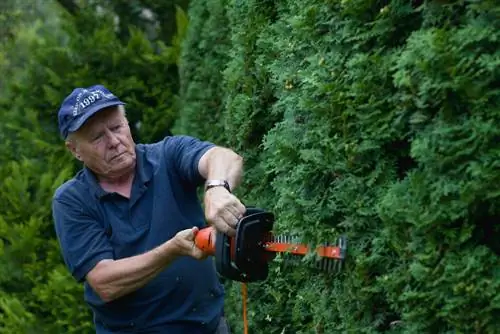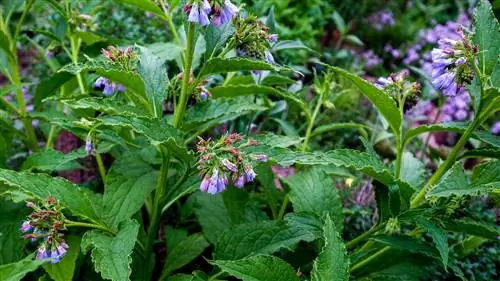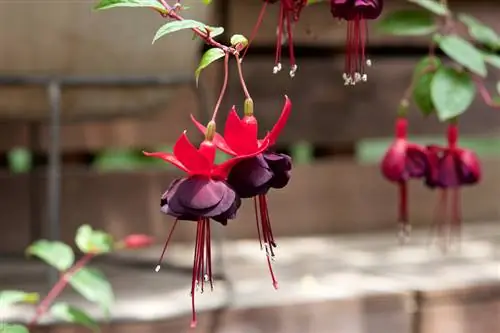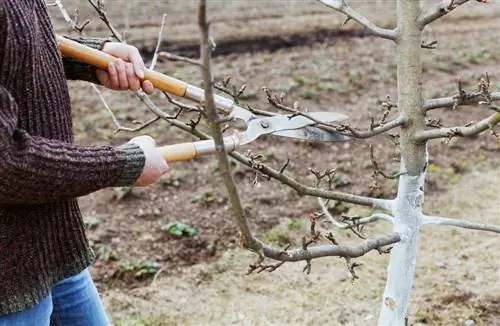- Author admin [email protected].
- Public 2023-12-16 16:46.
- Last modified 2025-01-23 11:20.
The hemlock is a tall tree with horizontally growing branches that are usually irregularly branched. The evergreen tree is frost hardy and tolerates pruning. The spring before budding is a good time to carry out pruning measures.
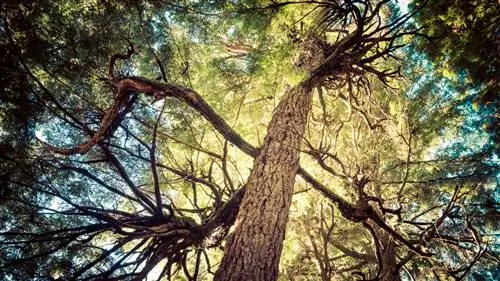
When and how do you prune a hemlock?
Pruning a hemlock is best done between February and April. To achieve denser branching, cut back the annual wood. For slimmer growth, shorten the side shoots, remove a second trunk if necessary or cut off the top.
The hemlock firs have a slender and upright or a wide and bulbous habit as well as hanging branches that are often irregularly arranged. They can reach considerable sizes of several meters in both height and width. In larger gardens or parks, the large fir trees can develop unhindered. There they are planted individually or in groups. In a smaller home garden, sprouting growth could become a problem that can be limited with appropriate pruning measures.
General cutting instructions
The hemlock is considered an easy-care tree that is particularly easy to cut. However, you should avoid cutting into perennial wood if possible. In the case of branches that are older than four years, shoots are usually very hesitant after cutting or do not appear at all. Pruning is preferably done before budding between February and April. If necessary, a second cut, for example with hemlock hedges, can also be done over the course of the summer. It is better to choose an overcast day.
Special cutting measures
- In order to obtain denser and more regular branching, cut back the “green”, annual wood.
- To trim a very large, old tree, make the cut as pyramidal as possible.
- For slimmer growth, shorten the side shoots.
- If the fir tree has two trunks, one of them can be removed at the base, which also leads to slimmer growth.
- If, however, you want to grow in width, this can be achieved by cutting off the tip. However, it should be noted that after cutting, not just one, but several tips develop.
Tip
The hemlock can grow around 50 cm per year under good conditions. Older trees grow more slowly. Tsuga heterophylla is a stronger growing species than Tsuga canandensis.

